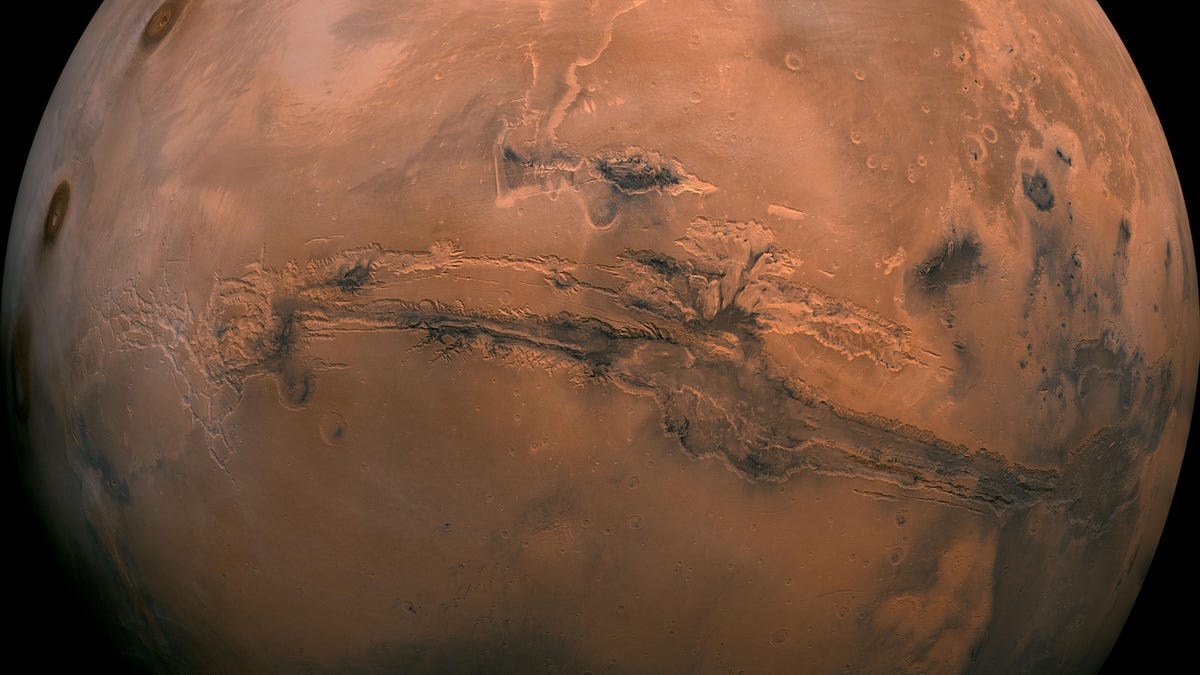Continent-sized Martian dust storm still growing and turning day to night
NASA's Opportunity rover is stuck in a huge storm that has literally turned day to night, forcing the solar-powered robot to nap for now.

It's awful hazy here right now.
NASA's Mars Reconnaissance Orbiter spotted a major dust storm on the Red Planet on June 1. Within a week, the storm had grown to cover an area larger than North America. Just a few days later, NASA says the storm has more than doubled in size again making it nearly the size of Asia and casting a very ominous shadow on the Opportunity Rover, which is caught in the storm.
"The storm is one of the most intense ever observed on the Red Planet, according to a NASA release dated Tuesday. "It has blocked out so much sunlight, it has effectively turned day into night for Opportunity, which is located near the center of the storm, inside Mars' Perseverance Valley."
NASA estimates that the storm covered more than 15.8 million square miles (41 million square kilometers) -- about the area of North America and Russia combined -- as of Sunday.
Science operations for Opportunity are temporarily suspended while it waits out a Martian dust storm. The dust in the atmosphere is impacting the amount of power generated by the rover’s solar panels. https://t.co/897LCuqMWX (Blue dot is approx location of rover.) pic.twitter.com/tY4aVfNyEz
— Spirit and Oppy (@MarsRovers) June 9, 2018
Tanya Harrison, who has worked on the science teams for Opportunity and other projects, says the storm now covering a big chunk of Mars isn't like what you might have seen in the "The Martian."
"The atmosphere of Mars is so thin, there's not a lot of oomph behind the wind," she wrote on Medium Monday. "It's not the wind that's the problem—it's the dust."
Martian dust storms send a layer of very fine dust into the atmosphere, blotting out the sun. This isn't good for a solar powered rover like Opportunity.
The images below show just how much dust can create darkness on Mars. The first five are actual daylight photos from Opportunity during different degrees of dustiness. The final two images simulate how dark it would get during even more intense storms. Right now, it's even more intense then the darkest image below on the far right.
What different values of atmospheric opacity, or tau, look like on Mars. Up through 4.7 are actual images from Opportunity; 6 and 8 are simulated. Current Tau is greater than 10, making it darker than any of these shots.
For now, Opportunity remains in hibernation, waiting for the storm to lift and the power-giving sun to return.
This could be just the beginning, though, as this is nowhere near the biggest dust storm we've seen on Mars. Back in 2001, a monster dust devil kicked up so much haze that it covered the entire planet, save for the peak of 15 mile-tall (24 km) Olympus Mons.
All that haze trapped so much heat that it actually raised the temperature by 30 degrees Celsius (54 degrees Fahrenheit).
So yes, things can actually get much worse on Mars. Something to consider as we look at the likelihood of sending humans there in our lifetimes.
NASA will hold a teleconference Wednesday at 10:30 a.m. PDT on the status of Opportunity, the storm and what it hopes to learn from watching the storm. You can watch live via YouTube and ask questions via social media using the hashtag #askNASA.
Crowd Control: A crowdsourced science fiction novel written by CNET readers.
Solving for XX: The tech industry seeks to overcome outdated ideas about "women in tech."

